|
THE BOTANIC GARDEN NEWSLETTER January 2025 Temporary Garden Closure: The Botanic Garden will be closed January 5–10, 2025, for major maintenance projects and will reopen January 11, 2025, at 8:30 a.m.
|
Temporary Garden Closure: The Botanic Garden will be closed January 5–10, 2025, for major maintenance projects and will reopen January 11, 2025, at 8:30 a.m. Wayne Roderick Lectures Saturdays 10:30 a.m.–12:00 p.m. Classes at the Botanic Garden Drama in the Botanic Garden: Shaw’s Agave Monarch Numbers Are Sharply Down This Year Introducing Dale Riley, Garden Administrative Specialist Native Grasses Featured at January Plant Sales Garden Tours
Photo: Sandy Steinman.
|
Wayne Roderick Lecture SeriesJoin us for our popular Wayne Roderick Lecture series on a broad array of topics related to plants and natural history. Named in honor of its founder, the Wayne Roderick Lecture Series takes place on Saturday mornings starting at 10:30 a.m. in the Botanic Garden Visitor Center auditorium. (Note: the January 4 presentation is ZOOM only.) These presentations are enjoyable for beginners and professionals alike. All lectures are free and open to the public.
|
Spring 2025 Classes with Dr. Glenn KeatorJoin us for two series of in-person classes led by Glenn Keator. California Plant Families will emphasize families important in California by examining their features in the Garden. Botanizing California will focus on habitats and adaptations of plants in a wide variety of different regions of California.
|

|
Feb 2, 16, Mar 2, 23, 30, Apr 27, May 4, 11, Jun 1
10:00 AM - 12:00 PM
Although there are hundreds of families worldwide, knowing 50 basic families in California will identify most plants 90 percent of the time. This series, taught by Glenn Keator, will emphasize families important in California by examining their features in the garden without the use of special tools. $225.00
|
|
|

|
Mar 8, 22, May 10, 17 , 24, Jun 7
10:00 AM - 12:00 PM
Glenn Keator presents a series that will focus on habitats and adaptations to plants in a wide variety of different regions of California including the north Coast Ranges, the Northern Mountains, the Sierra foothills, the high Sierra, the deserts, and the Channel Islands. $150.00
|
|
|
Drama in the Botanic Garden: Shaw’s Agaveby Ted Nirgiotis If you have visited the Desert section of the Regional Parks Botanic Garden recently you will have noticed an impressive transformation slowly proceeding: the Shaw’s agave (Agave shawii ssp. shawii) is preparing to flower. Rising from two of the rosettes of leaves are tall, thick stalks that will develop enormous inflorescences (clusters of flowers on a stem). Look for them in bed 021 of the Botanic Garden. This rare and interesting plant is endemic to a narrow strip of maritime succulent scrub habitat along the Pacific coastline from southern San Diego County into northern Baja California. These original specimens were collected near Ensenada, Baja California, in 1962.
|
|
|
|
Agave shawii subsp. shawii in the Regional Parks Botanic Garden, October 2024. Photo: Ted Nirgiotis. |
|
|
|
The flowering process of agaves is fascinating. All members of the family Agavaceae are perennial, rosette-forming succulents. The rosettes are spiral arrangements of leaves. Each individual rosette flowers separately and then dies. The surrounding rosettes will stay alive until they, in turn, flower and die. The individual rosettes are long lived, in the case of Shaw’s agave perhaps as much as 40 years.
|

|
When they are ready to bloom, normally beginning in late summer, each will form a stalk that will grow relatively rapidly to heights of as much as 12 feet. We aren’t sure when our own specimens will finally flower. At various locations in California, flowering has been observed as early as November and as late as June. Marcus Tamura, the gardener in charge of the Desert section, predicts that the new stalks may begin opening their inflorescences by late March, 2025. About a dozen branches will form at the top of the stalk, each with 30-70 yellow flowers. Although each rosette dies after it is finished flowering, the plant will live on in the form of numerous clonal “pups,” as the new rosettes are called. These new plants grow from the root system and are genetically identical to the mother plant. In the Botanic Garden, a spent stalk, which bloomed from mid-April to mid-June of 2023, can be seen next to the two new stalks, with pups scattered beneath it. The pollination process for Shaw’s agave is not yet fully understood, but it is key to conservation efforts. Scientists have discovered that the plants’ anthers open to release pollen only at night. This is suggestive of chiropterophily (bat pollination), as is the shape of the large, tall, upright flowers with their copious nectar. South of the border, the main population in Baja does appear to be pollinated by the three different species of bats in the region. Photo: Regional Parks Botanic Garden Brochure. |
|
|
However, when scientists from the U.S. National Park Service studied the population at Point Loma in San Diego County, they were unable to observe bats visiting the agaves, even when they used sophisticated acoustic and ultrasonic bat monitors (Anabats is one such device). Honey bees and birds such as hummingbirds visit the flowers, but the scientists were unable to observe the transfer of pollen. Photo, right: Michael Ready, National Park Service. |
|
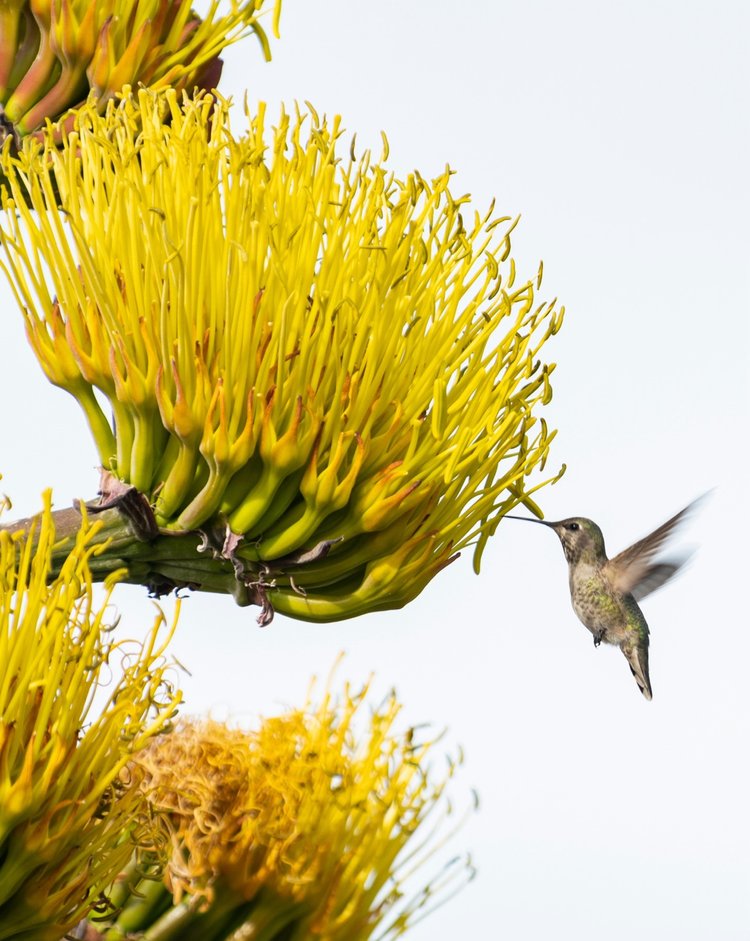
|
|
|
Although Shaw’s agave can reproduce clonally, this is not a safe strategy for the long-term survival of the species since it doesn’t allow for spatial dispersal or for maintaining genetic diversity. Genetic diversity is needed for species to evolve and adapt to new threats and growing conditions. This makes production of viable seed very important. Botanists studying Shaw’s agave in the U.S. have found a low rate of seed viability, less than 10%. Seeds have been gathered for collections at the California Botanic Garden (formerly Rancho Santa Ana), where horticulturalists have been able to germinate them. At Cabrillo National Monument, scientists found that viable seeds would readily germinate but that they would immediately be eaten by herbivores such as rabbits unless they were protected in metal cages.
|
|
|
|
For Shaw’s agave, viable seeds are black and non-viable seeds are light brown to white. While the pollination of Shaw’s agave in southern California is undocumented, viable seeds are still being produced. Photo above: Michael Ready, National Park Service. Because the plants are relatively easy to propagate, Shaw’s agave has been suggested for use in native-plant gardening and can sometimes be found in nurseries. Various types of agave, including Shaw’s agave, have long been used by native peoples in Mexico and the United States, for example, by the Kumeyaay of the San Diego area. Agaves are an excellent source of fiber, and they store liquid carbohydrates. The stems and leaf bases can be roasted and eaten. In Mexico, many different species of agave are used to make the alcoholic drink mezcal, whose name means “oven-cooked agave” in the indigenous Nahuatl language. The most famous type of mezcal is tequila, which is made from the blue agave (Agave tequilana). Shaw’s agave is a beautiful and useful plant, but it is critically imperiled in California. The native population north of the Mexican border most likely consists of only two occurrences. The first is at Borderfields State Park, just north of the border wall separating San Diego from Tijuana. Construction of the border wall appears to have damaged this population, and it has been reduced to a single genetic individual made up of a number of clonal pups. |
|
|
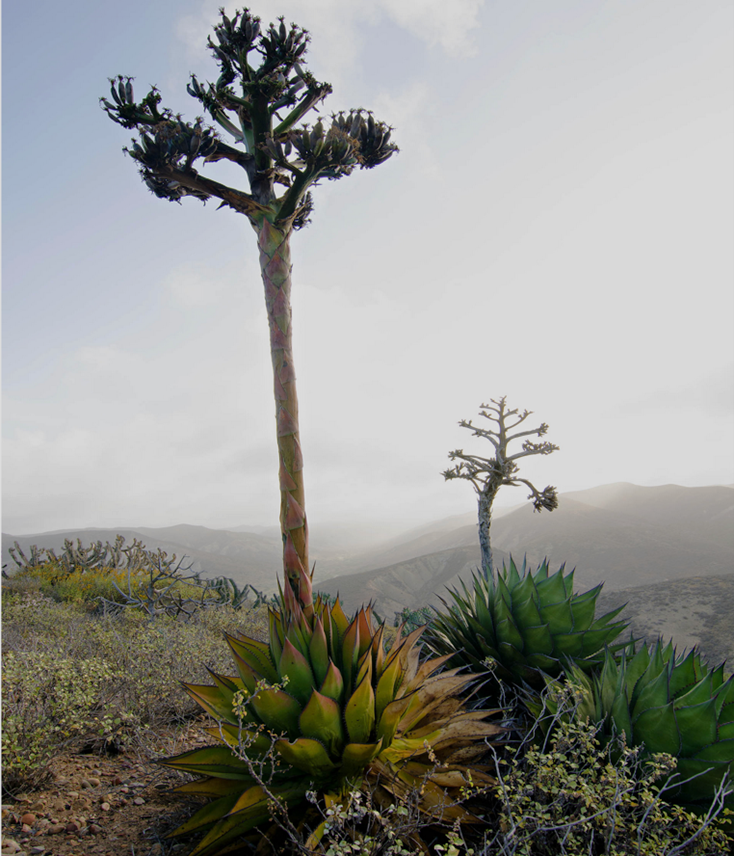
|
There is also an occurrence, partially native and partially planted, at Cabrillo National Monument on Point Loma. The Regional Parks Botanic Garden also has specimens of Agave shawii ssp. shawii in beds 02, 05, and 022, some of which were collected either from plants or seeds from the two natural occurrences north of the border. By growing these specimens, we are helping to conserve the genetic diversity of this subspecies of Shaw’s agave. Left: Valle Tranquilo Nature Reserve, El Rosario, Baja California, Mexico. Photo: Michael Ready, National Park Service. |
|
|
|
Although the plant’s range is more extensive in Baja, it is also threatened there, especially because it grows on coastal bluffs that are highly desirable for construction and development. The plants are facing dire threat by the use of its habitat for agriculture. The natural vegetation along the northern coast of Baja is often bulldozed and then burned to make way for planting. This has led to a devasting loss of this keystone taxon. An international team of scientists is working to conserve Shaw’s agave. Botanists from the National Park Service along with the San Diego Natural History Museum are trying to better understand how it is pollinated, and another group is measuring the genetic diversity both in the U.S. population and in Mexico. These researchers have discovered that there is more genetic diversity than expected, raising hope for the conservation effort. Unfortunately, rapid development is continuing to threaten the habitat of Shaw’s agave. It remains to be seen whether an aggressive international conservation plan can be implemented in time to save this iconic botanic gem.
|
|
Ted Nirgiotis is a docent at the Regional Parks Botanic Garden. A retired mathematics professor, he has a life-long interest in natural history, especially that of California. He is the co-author of No More Dodos: How Zoos Help Save Endangered Wildlife.
|
Monarch Numbers Are Sharply Down This Yearby Sarab Seth One reason for the public’s endless fascination with the monarch butterfly is its epic migration. Monarchs east of the Rockies migrate south to Central Mexico in the winter, where they congregate in massive clusters in Oyamel Fir forests in 12 mountain areas in the states of México and Michoacán. Some of these butterflies—which weigh half a gram on average, less than the weight of a paperclip—fly all the way from Canada and travel an astonishing 3,000 miles to get to their overwintering grounds. Monarchs west of the Rockies can fly up to 1350 miles, from as far away as British Columbia in Canada to overwintering sites in California along the Central Coast and the South Coast. Central Coast sites include Pacific Grove and two sites in Santa Cruz; South Coast sites include Pismo Beach. Most years, there are small over-wintering clusters in the East Bay, usually on eucalyptus trees. The largest clusters have historically been found on Albany Hill, up to 500 or 600 butterflies in recent years. But in 2015, Aquatic Park in Berkeley had a cluster of 1325 butterflies for a short while. Periodically, the population of overwintering western monarchs drops precipitously. The Xerces Society counted only 1901 monarchs for the entire West Coast during their Thanksgiving count in 2020. Numbers bounced back handsomely the next three years (with more than 230,000 each year), but 2024 is evidencing a significant decline again. Numbers were already low in the middle of November, and most sites were adversely affected by the six-day atmospheric-river storm that started on November 20th. This year, Lighthouse Field in Santa Cruz has the largest overwintering population (which is unusual). They had 1,307 monarchs on November 29, down from 8,511 on December 2 last year. The other three main sites show much steeper declines. Pacific Grove had only 202 on December 6; last year on December 8, there were 5,228. The most heartbreaking declines are at Natural Bridges State Beach in Santa Cruz and at Pismo Beach. Natural Bridges had only 50 monarchs on December 8, barely 0.6% of the 8,000 they had last year on December 14. Pismo Beach had roughly 200 on December 5, barely 1.2% of the 16,044 they had on November 27 last year. Locally, numbers are down sharply at Albany Hill: only 10 on December 6, versus 300 at this time last year. The only significant local cluster seems to be in the Gill Tract Community Garden in Albany, with roughly 200 monarchs on December 1. It’s possible that the eucalyptus grove there is more attractive to the monarchs than last year; it is now sheltered from the wind by the huge new university-housing building at Monroe and 10th. So, the Gill Tract grove may have siphoned butterflies away from Albany Hill. Hopefully, next year will bring a strong recovery to the numbers we have had in the last three years. However, that is by no means a foregone conclusion, since the reasons for precipitous declines and sharp recoveries are not well understood. Sarab Seth is a butterfly photographer and a docent at the Botanic Garden. He is helping to finalize a brochure highlighting butterflies found in the Garden. Sarab leads monthly butterfly walks in the Garden, April through October. Photos below: Sarab Seth.
|

|
Monarchs in 2022 at Natural Bridges State Beach, Santa Cruz, California. |
|
|
Monarch clusters in 2015 at Aquatic Park in Berkeley California. |
|
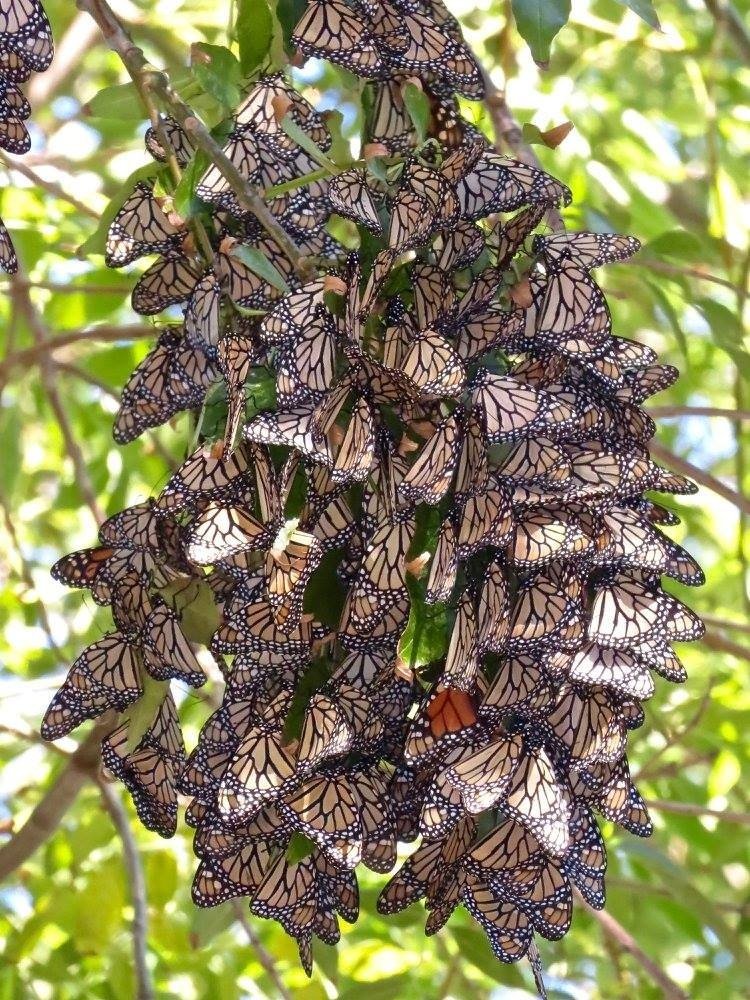
|
|
Introducing Dale Riley, Administrative Specialist at the Botanic Garden
|
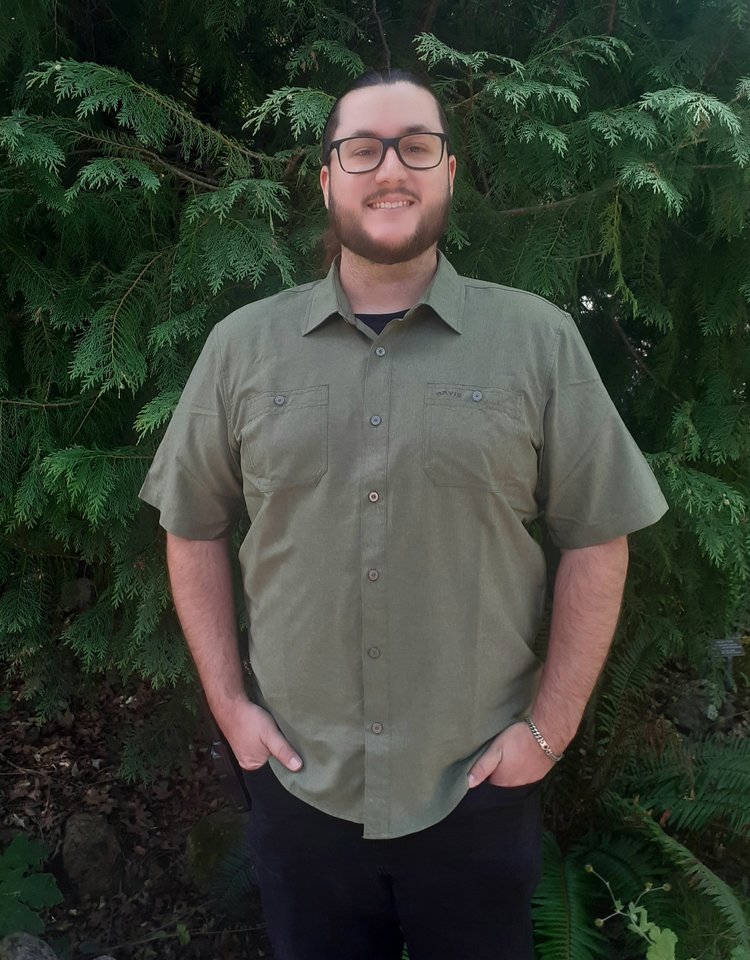
|
We are very happy to welcome Dale Riley as the permanent Administrative Specialist at the Botanic Garden! Dale is an East Bay native who was born and raised in El Sobrante. He attended Salesian High School and graduated with a bachelor's degree in communications from California State University, Sacramento. Before joining the Park District, Dale worked in corporate tax and finance for eight years. He feels right at home in the Botanic Garden and is excited to be a part of the amazing staff. |
|
|
Weekly and Monthly Plant SalesPlant sales are held Wednesdays, 10:00 a.m.–12:00 noon, and the first Saturday of every month, 10:00 a.m.–2:00 p.m. Current plant inventory is available on the Garden website. California native bunchgrasses are featured this month. Available in both 2” and 3” pots, they are ready to be planted now. Below are a few of the available species.
|
|
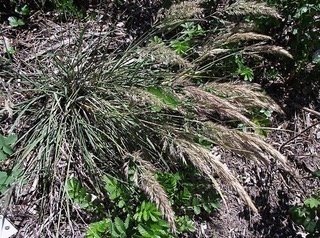
|
Calamagrostis foliosa - A somewhat rare perennial bunchgrass native to northern California. The tuft of stems can reach 24 inches in height. Despite being rare in the wild, it is often found in nurseries and used as an ornamental grass. Photo: ©Stickpen 2009. |
|
|
|
|
Festuca idahoensis - Widespread throughout Western North America. Densely clumping and long lived perennial grass. Stems grow to about 12-32 inches. This grass can add welcome color and texture to the landscape. Photo: ©Stickpen 2009. |
|
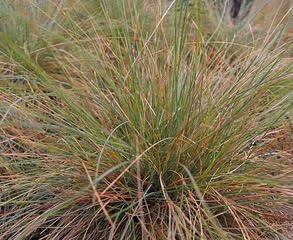
|
|
|
|
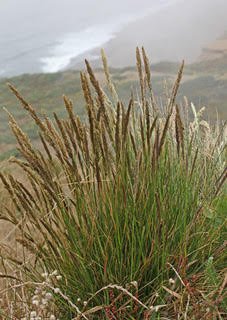
|
Deschampsia cespitosa subsp. holciformis - Bunchgrass native to central and northern coast. Said to be deer resistant. Does not do well in hot, dry inland areas. A good choice for gardens within its native range. Photo: Vernon Smith. |
|
|
|
Garden ToursYou're invited to our free, docent-guided tours every weekend and on Park District holidays! Explore the Garden sights with us on Saturdays and Park District holidays at 2:00 p.m., and Sundays at 11:00 a.m. and 2:00 p.m. There will be a 2:00 p.m. tour on Monday, January 20, 2025, the Dr. Martin Luther King, Jr. holiday. Meet at the Visitor Center, no need to sign up. Please remember, if it's raining, we'll have to cancel. Below are a few of the winter features in the Botanic Garden. Photos: Sandy Steinman.
|

|
|
Bigberry manzanita (Arctostaphylos glauca). |
|
|
Coast silktassel (Garrya elliptica). |
|
|
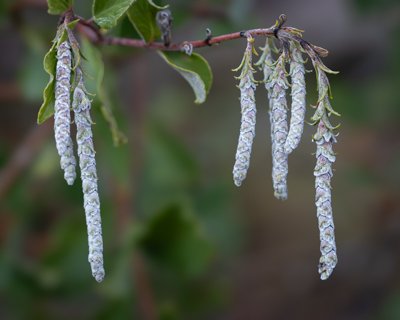
|
|
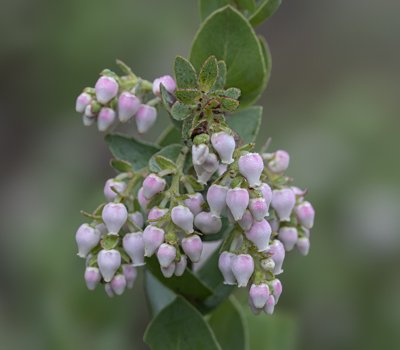
|
|
Refugio manzanita (Arctostaphylos refugioensis). |
|
|
Toyon (Heteromeles arbutifolia). |
|
|

|
|
|
|
|